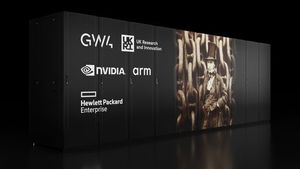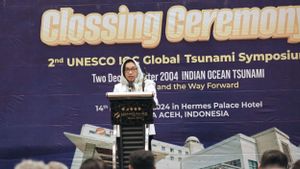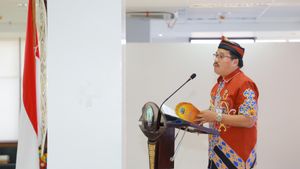JAKARTA - The United Arab Emirates (UAE) has just planned a mission to visit asteroids that may accommodate building blocks of life. The mission will be launched about a decade from now.
Dubbed Emirates Mission to the Asteroid Belt (EMA), the project aims to develop spacecraft in the years to come, and then launch it in 2028 to study various asteroids.
"The Emirates mission to the Asteroid Belt is a massive scientific project that will result in the establishment of a private Emirates company that specializes in science and space technology, the development of a deep space mission control center, and Emirati talent training," said UAE vice president and prime minister Sheikh Mohammed bin Rashid Al Maktoumbin Rashid Al Maktoum in his official statement, quoted Tuesday, May 30.
The EMA spacecraft will be named the Sheikh, but called the MBR Explorer, which will travel 5 billion kilometers across Mars to explore seven asteroids in the main asteroid belt and eventually land on Justitia's last asteroid (269) in 2034.
On Justitia, MBR Explorer will launch a small lander. The asteroid is claimed to have organic molecules on its surface. Organic is a complex molecular compound that can form life in the right circumstances.
The search means a lot in Justitia, which may have formed closer to Earth and then migrated to its current position in the asteroid belt between Mars and Jupiter, as reported by Space.
Cross-asteroid fly included, (10254) Westerwald, (6) Chimaera, (13294) Rockox, (88055) 2000 VA28, (23871) 1998 RC76 and (59980) 1999 SG6, all intended to represent different classes of asteroids with varying types of composition.
Justitia and Chimaera are about 31 miles (50 kilometers) in diameter, with the remaining asteroids less than 6 miles (10 km) each.
The EMA consists of a thirteen-year mission, namely a six-year spacecraft development phase followed by a seven-year flight to the main asteroid belt outside Mars, and a series of near-by-fly to make unique observations of the seven main belt asteroids.
另请阅读:
This mission will be built on learning, capabilities, innovations, the legacy of Mars Emirates Mission and further accelerate the development of the country's private space sector. It is known that the UAE has successfully launched the Hope spacecraft that landed on Mars in 2020.
Furthermore, four MBR Explorer science instruments include high-resolution cameras, thermal infrared cameras, medium wavelength spectrometers, and infrared spectrometers.
Together, the instrument will support observations that will measure surface composition, geology, interior density and asteroid structure in the five main belt families.
This is to help better understand the origins and evolution of a water-rich asteroid and also assess the potential of asteroid resources and prepare roads for the use of asteroid resources in the future.
The English, Chinese, Japanese, Arabic, and French versions are automatically generated by the AI. So there may still be inaccuracies in translating, please always see Indonesian as our main language. (system supported by DigitalSiber.id)














